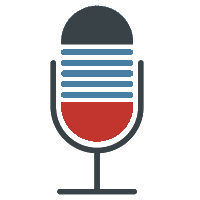February 26, 2024
The Digital Thread Makes Supply Chain Sustainable

Transcript
Supply Chain in the Post-COVID Age
The COVID-19 pandemic brought into focus the need for digital tools to manage supply chains, preferably tools with intelligent analytics capabilities that look out for cost savings and manage risk in a shifting procurement landscape. Digitization was already near universal in some industries such as retail, but for physical commodities such as non-ferrous metals, oil, and gas, the adoption of the digital thread for the supply chain is still less than 50%. What does it take for these industries to move away from traditional paper and spreadsheet methods and what’s the upside when they do so?
My guest today is a a longtime supply chain specialist with experience across various sectors including oil and gas, non-ferrous metals, and environmental markets. Andrea Aranguren is the CEO of MineHub. On the podcast today, Andrea Aranguren makes the argument that digitization of the supply chain is not only good for inventory management and productivity, it opens the door for sustainability assessments that help companies reach their net carbon targets and reduce emissions throughout their supply chains.
What Industries Digitize Supply Chain?
Andrea Aranguren: I have spent most of my professional career in the commodities, physical commodities market, mostly on the operations and logistics side. So I’ve spent time in a variety of different physical commodities markets, everything from oil and gas to non-ferrous metals to environmental markets as well. I’ve spent time at large companies like Goldman Sachs and IHS Markit, but I’ve also spent a lot of time consulting with startups, helping them with supply chain digitization and optimization.
Leah Archibald: Supply chain was not on everybody’s lips five years ago before the pandemic. But after the supply chain disruptions during the pandemic, now we hear everybody, even folks who are not in the manufacturing industry, talking about supply chain shortages and challenges in the global supply chain. Do you think the pandemic led to a moment of reckoning around supply chain management?
Andrea Aranguren: COVID definitely changed everything for anybody having to do with the supply chain, any form of consumer or manufacturer. Before you had almost a predetermined assumption that there was a reliability of supply. We assumed that materials would just arrive when you needed them to. Or that additional materials would be available when you needed them. That notion completely changed with COVID. And I think it highlighted the need for new digital tools, not just from an efficiency perspective or with the need to modernize, but really to mitigate risk as you run your company, because you can no longer run it the way that you did before. You can’t run hugely complex global supply chains and operate them on paper and spreadsheets like we have been for the last hundreds of years, but that we needed to find a better way, and that there became issues around business continuity and people not being able to access paper that was living in manila folders in an envelope in an office. I think it definitely changed the framework by which we think about how we can run and manage businesses within the supply chain.
What Percentage of Businesses have Digitized Supply Chain?
Leah Archibald: What percentage of businesses are now on board with digitizing their supply chain?
Andrea Aranguren: I wish it were 100%. It’s not 100%. When you talk about supply chain, that can be very, very broad. The Walmart supply chain is incredibly digitized. But if we’re talking about the physical commodities supply chain and where we’re really focused in mining and metal, it is certainly not digitized. I think less than 50% is probably even generous.
Leah Archibald: What does the supply chain look like pre-digitized? And then what does supply chain look like when you do go through the digitization process?
Andrea Aranguren: Pre-digitized, you have operations teams that basically log onto their computer and have thousands of emails with hundreds of different attachments indicating whether material has shipped or hasn’t shipped. They’re often keying that or manually inputting that into spreadsheets to try to understand the status of orders and where material is left and how much inventory there is and where you have a huge volume of shipment. So some customers can have 500 trucks being delivered in one month from one supplier. That’s 500 times that you’re opening shipping documents, 500 times you’re putting it into an Excel spreadsheet and trying to reconcile. And that’s just one order from one supplier in one location. So you can imagine that volume of administrative work is unmanageable. And so what ends up happening is you end up not really having a great handle on what is the status of your order, how much is left to be delivered, how much is actually in transit, and when is material going to arrive. That often leads to suboptimal decision making or inefficiencies in the operations, whether you’re a buyer or a seller. But with digital tools, what we can do is connect to the data sources, and automate and streamline all of that manual work. We reconcile it automatically. And so you can log in from your internet browser into a site and you have an up-to-date real-time view of exactly where all your orders are, where every shipment is.
You have every single document, a completely streamlined sort of source of truth. That unlocks an incredible opportunity to be more productive in different ways, to use time for strategic purposes, and also to provide very comprehensive reporting and analytics to help you from a decision making perspective, whether that’s decisions about cost or about sustainability.
What Does Sustainability Mean in Supply Chain?
Leah Archibald: It’s interesting that you mentioned sustainability because a lot of executives are talking about sustainability in terms of their product design, their own products. But sustainability in supply chain can mean a variety of different things. It could mean energy usage, it could mean shipping distance, it could mean the raw materials and what is the carbon impact of them. How do you see companies coming up with a baseline for carbon footprint?
Andrea Aranguren: It’s a really great question. You could ask pretty much every company in the supply chain how they think about sustainability and you will unlikely get the same answer twice. Right now we see certain driving forces creating some clarity. For example, you have consumers demanding more transparency to understand the sourcing of material to make sure that it’s sourced sustainably and responsibly. So that’s one aspect of sustainability, which is really closer to traceability and sustainable sourcing. The other aspect which you mentioned is definitely carbon intensity. I think that’s probably what’s most clearly defined and most commonly spoken about, at least in my experience, when we’re talking about sustainability. Understanding your scope one, two, and three emissions, and what is the carbon intensity of the products that you’re actually producing and sourcing. It comes back to what we were talking about before, when this data lives in scanned PDFs in thousands of emails, it’s incredibly difficult to centralize and to actually report and understand it.
Leah Archibald: So once your data is digitized, then you can have this digital thread that can run through a multiplicity of operations, whether it’s finding the lowest cost sourcing location or the lowest carbon. You need to start with creating that digital thread, and then you can plug it into a lot of different types of reporting.
Andrea Aranguren: That’s exactly our core philosophy.








